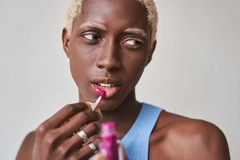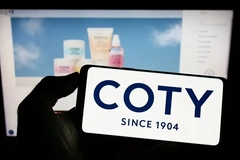China to standardize requirements for anti-freckle and whitening cosmetic labels and testing

30 Aug 2022 --- The Chinese National Institutes for Food and Drug Control (NIFDC) is taking steps to standardize the definition of anti-freckle and whitening cosmetics to provide precise product labels and their tested effects on the skin. CIRS Group reports that the Technical Guidelines for Anti-freckle and Whitening Cosmetics draft is soon to be subject to registration.
Anti-freckle and whitening cosmetics are products that can reduce hyperpigmentation marks or slow pigmentation to make the skin look brighter or whiter, according to the draft. Under this proposal, products that fade acne marks by fading pigmentation should also be registered as anti-freckle and whitening.
However, products that physically cover the pigmented marks, but make the skin look brighter and whiter, are to be registered as anti-freckle and whitening – only by physical covering – and do not need to comply with the draft guidelines.
Earlier this month, the NIFDC sought comments for public opinions on the Technical Guidelines for Anti-freckle and Whitening Cosmetics draft.
What does not count?
Anti-freckle and whitening products may cause the keratinocytes containing melanosomes to move toward the stratum corneum by exfoliation or other means, explains CIRS. This helps to speed up the process of melanin excretion from the skin. Anti-freckle and whitening cosmetics reduce hyperpigmentation marks or slow pigmentation to make the skin look brighter or whiter.
Anti-freckle and whitening cosmetics reduce hyperpigmentation marks or slow pigmentation to make the skin look brighter or whiter.
Hence, exfoliating agents in anti-freckle and whitening cosmetics can boost the effects of such products. However, exfoliating ingredients are not anti-freckle and whitening agents themselves.
Products that brighten the skin by hydration, cleansing and exfoliating are also not classified as anti-freckle and whitening cosmetics.
Additionally, products with sunscreen agents can claim that they aid in reducing tan and pigmentation caused by the sun. However, they cannot directly claim anti-freckle and whitening effects.
Classification and product name
Products exported to China and designed for the Chinese market – except entrustment abroad by the domestic company – have to submit the instructions of their formula design according to their targeted skin types, outlines CIRS.
For example, Fitzpatrick skin types classification can be used to characterize skin types or pigmentation spots of Chinese consumers.
Moreover, if the product contains anti-freckle and whitening ingredients, its purpose of use needs to be explained on the sales package. However, if a generic product name contains anti-freckle or whitening words, the efficacy should be consistent with the product claim.
Regulations and science
If the product formula containing anti-freckle and whitening ingredients has multiple ingredients, those specific components must be recorded in the formula table.
Anti-freckle and whitening agents that have been approved need to be provided with either regulatory data or a scientific basis.
Regulatory data on the use of anti-freckle and whitening agents can be provided by published regulations or approved by regulators from countries with similar skin types to the main population of China.
“The scientific basis of the action mechanism should be the experimental data of the ingredients, published literature and the research data from testing institutions that conform to the principles of good laboratory practices,” outlines CIRS.
Ensuring safety and reliability
Mechanisms and research methods for anti-freckle and whitening agents include reducing the levels of tyrosinase or other enzymes or proteins required for melanin synthesis. Also, they often function by reducing or inhibiting enzyme activity or proteins like tyrosinase. Including ingredients that inhibit the oxidation of critical substances and the maturation or transport of melanosomes.
China’s new regulatory draft stipulates that product efficacy should always be tested as outlined in the Safety and Technical Standards for Cosmetics. If other methods are used, they need to be certified and verified by testing institutions with CMA or CNAS qualifications; based on being consistent with the Safety and Technical Standards for Cosmetics.
Moreover, this year, registrants need to provide information on the safety of anti-freckle and whitening agents following the Provisions on the Management of Cosmetic Registration and Filing Data.
“If plant extracts are used as anti-freckle and whitening agents, the safety information should include characteristic control indicators such as quantitative requirements for index components,” continues CIRS.
“When the functional ingredients are clear and are used for anti-freckle and whitening, control indicators related to the functional ingredients should be set; if there are no clear functional ingredients, the extraction and production process should be specific and clear.”
Labels must be clear and according to the Measures for Administration of Cosmetics Labeling. Medical terms such as “removing melasma, removing freckles, removing pigmented moles” should not be used.  Products that brighten the skin by hydration, cleansing and exfoliating are also not classified as anti-freckle and whitening cosmetics.
Products that brighten the skin by hydration, cleansing and exfoliating are also not classified as anti-freckle and whitening cosmetics.
In addition, there should be no exaggerated claims such as “skin-whitening immediately, eliminating melanin, blocking melanin transport and reaching the bottom skin layer” used.
Testing is required
The guideline also requires pH value and toxicological testing for anti-freckle or whitening cosmetics.
The new regulatory draft outlines that any results demonstrating skin irritation should be non- or mildly irritating. Skin sensitization should be “weak or none.” There should also be no phototoxicity.
“Results of the acute eye irritation tests (if any) should be non-irritating, slightly irritating or mildly irritating,” adds CIRS.
“Anti-freckle or whitening products require a human skin patch test. Rinse-off products claiming anti-freckle efficacy should also undergo human trial tests for safety evaluation.”
Additionally, the efficacy evaluation test has to meet the requirements of the Inspection Specifications, Safety and Technical Standards and Standards for the Evaluation of Cosmetics Efficacy Claims.
“A complete assessment of relevant raw materials should be made according to the risk assessment procedures specified in the Technical Guidelines for Cosmetics Safety Assessment. Other types of evidence in the simplified version of the safety assessment report are not allowed,” flags CIRS.
Moreover, applicants can submit a simplified version of the product safety assessment report (following the Technical Guidelines for Cosmetics Safety Assessment) before May 1, 2024.
Edited by Venya Patel












